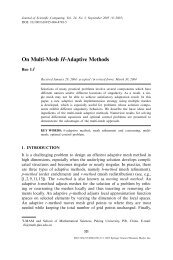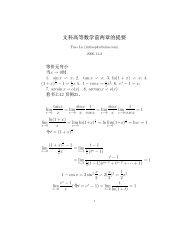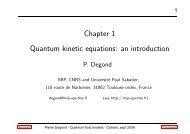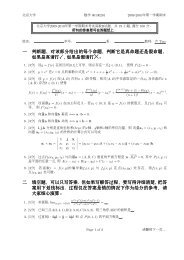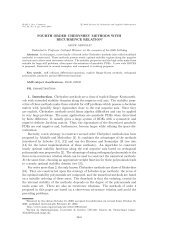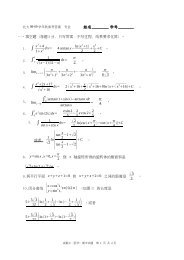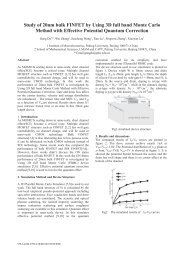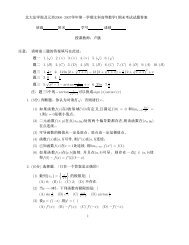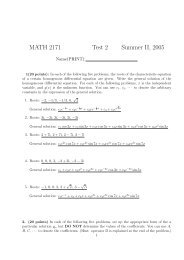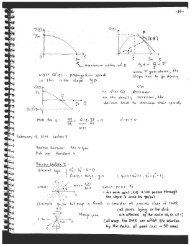Abstract
Abstract
Abstract
Create successful ePaper yourself
Turn your PDF publications into a flip-book with our unique Google optimized e-Paper software.
CHAPTER 4. THEORY 79<br />
given by<br />
Kmax<br />
−Kmax<br />
|u(x, k ′ )|dk ′ =<br />
≤<br />
Kmax<br />
−Kmax<br />
Kmax<br />
−Kmax<br />
(1)|u(x, k ′ )|dk ′<br />
≤ 2KmaxuX.<br />
1 2 dk ′<br />
1<br />
2 Kmax<br />
−Kmax<br />
|u(x, k ′ )| 2 dk ′<br />
1<br />
2<br />
We will now get an estimate for T (x, k − k ′ ) for u ∈ L 2 ([0,L] × [−Kmax,Kmax]). By<br />
Equation (1.16), we know that U(x) is the sum of the electrostatic potential up(x)and<br />
the potential barriers ∆c(x). The dependence of T (x, k −k ′ )onu is through Poisson’s<br />
equation (Equation (1.13)). We can solve Poisson’s equation explicitly through the<br />
use of a Green’s function [13]. The Green’s function for Poisson’s equation in one<br />
dimension for the domain [0,L]isgivenby<br />
Therefore, the exact solution up(x) isgivenby<br />
L<br />
up(x) =<br />
0<br />
⎧<br />
⎪⎨ z(<br />
J(x, z) =<br />
⎪⎩<br />
x − 1), if 0 ≤ z ≤ x<br />
L<br />
x( z<br />
. (4.4)<br />
− 1), if x ≤ z ≤ L<br />
L<br />
2 q<br />
J(x, z) Nd(z) −<br />
ɛ<br />
1<br />
Kmax<br />
u(z,k<br />
2π −Kmax<br />
′ )dk ′<br />
<br />
dz.




